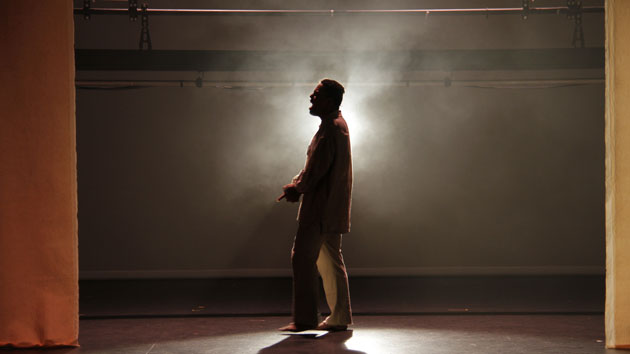The PARADE that marches on
WORDS BY ADAM TORRES
It would not be a uniquely hot take to declare that in 2018, media corruption and the mistreatment of minorities are live issues. The 1910s set Parade — rather eerily — navigates these same issues. Maybe it was fate, then, that MUSE voted to perform Legally Blondeinstead of Parade in 2016, only for the latter to be selected two years later when its core issues saturate our everyday lives.
In Parade, Alfred Uhry and Jason Robert Brown explore the anti-Semitic tensions that surrounded the trial of Leo Frank, a Jewish factory manager accused of raping and murdering a 13-year-old employee named Mary Phagan. Hayden Tonazzi’s direction was crucial in transporting the audience to 1913 Georgia: the stage was interspersed with confederate flags and peppered with actors speaking and singing in an unmistakeably Southern drawls.
Parade is a noteworthy departure from the more fun, carefree undertakings of recent years — Parade runs circles around Grease and Legally Blonde, for example, in respect of emotional depth. It also represents something of a departure from MUSE’s well-established — until now — political environment. It is less than two years ago when MUSE was very publicly criticised in Honi Soit. They produced racist shows, argued an anonymous writer. Actors of colour were not cast in relevant roles. A club member asserted that the white singers were better and thus more suited to lead roles.
All of these criticisms seem imagined, now. So much so, in fact, that the actors of colour stole the show on more than one occasion: “Rumblin’ & Rollin’” pondered the community response if the victim of the crime had been a young black girl. The chemistry between and the sheer vocal prowess of the three black characters made for a showstopping few minutes. Naisa Lasalosi hypnotised with his rendition of “Blues: Feel The Rain Fall”, his voice seamlessly transitioning between melodic soaring and earthy growling. It was tangible in the atmosphere: the audience was flirting with the idea of a standing ovation.
Photo credit: Keshav Unhelkar
Beyond unadulterated talent, though, Parade displayed an impressive level of emotional nuance, and the cast must be commended for this. The peaks and valleys of Parade’s emotional contours were reached seemingly effortlessly — the cast navigated the emotional landscape with poise. Lucy Allen’s portrayal of a mourning Mrs Phagan was stunning. There is a line in the musical Oliver! that references mourners who have been “taught to weep in tune”. This phrase encapsulates Allen’s performance of “My Child Will Forgive Me” — pitch perfect, but layered and imbued with a mourner’s melancholy.
Brendan Paul and Sarah Levins — who played Leo and Lucille Frank respectively — displayed perhaps the most impressive journey across and through Parade’s emotional landscape. From skepticism about their relationship (“What Am I Waiting For?”) to a loving sense of regret (“All the Wasted Time”), they displayed an exceptional emotional repertoire punctuated by seamlessly incorporated and well-delivered jokes. Jack Westbury was also key in punctuating this quite serious musical with comedic interjections — his performance as the guard elicited giggles and cackles at much needed intervals.
Photo credit: Keshav Unhelkar
These memorable moments were made possible by a supportive and synergistic chorus. They worked splendidly as a unit, propelling what felt, at times, like an arresting wall of sound. The choreography was evidently closely studied: the dancers did not fall into the trap of concentrating too hard, proven by their effortless smiles. They navigated the set elegantly, weaving in and out of its versatile structures as if they were merely part of the furniture. For this, Hayden’s set design should be commended. The band must also be commended — they were infallible and pivotal in transporting the audience to 1910s Georgia.
Of course, the show was imperfect. A few notes were a little flat and others were overperformed. There were a few moments where the dead time between scenes became a frustration. Rightfully, the audience was forgiving: this was not a Broadway production, so shortcomings are permitted and overlooked. Regardless, they were few and far between.
Photo credit: Keshav Unhelkar
Parade handles remarkably profound issues with an unexpected but splendid delicacy. One can only hope that it is not another 10 years until the next performance of this show: it espouses valuable lessons that are as relevant in 2018 as they were over a century ago. Parade ought not operate solely as two hours of entertainment, but as a call to action as well.



